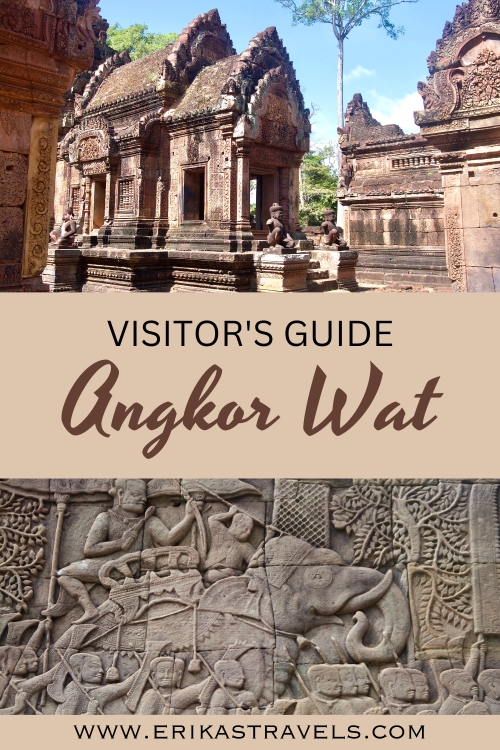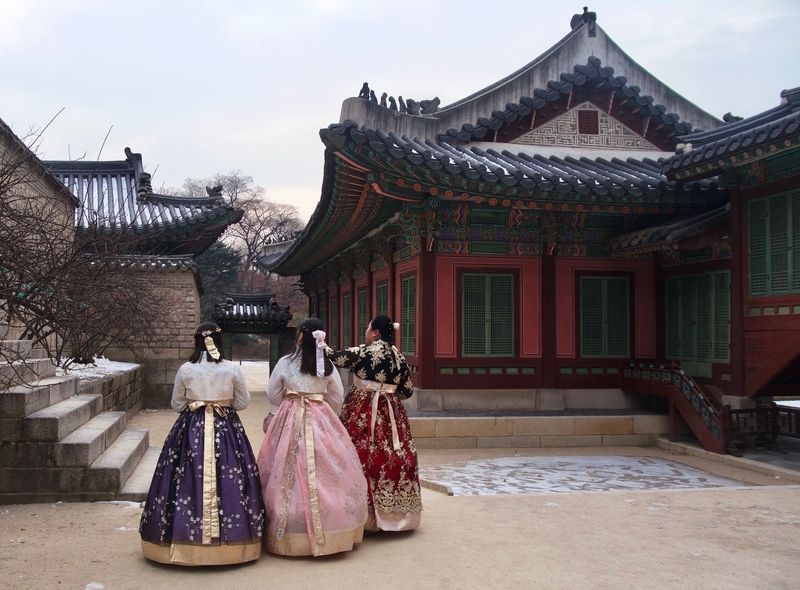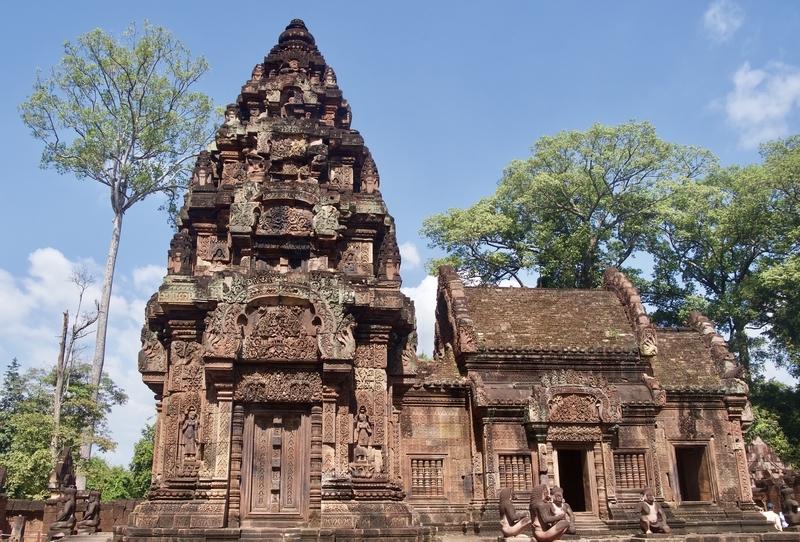
Visiting Angkor Wat: Travel Guide and Itinerary
Angkor Wat is an enduring example of humanity’s devotion to its deities. A sprawling temple complex of crumbling palaces, ruined sculptures and holy places of worship, it is the largest religious structure on Earth.
There are few places on the planet that rival the staggering and mysterious beauty of Angkor Wat. The glorious temple is the heart and soul of Cambodia: it is the country’s premier tourist attraction, its national symbol, and the epicenter of Khmer civilization.
THE TEMPLES OF ANGKOR
Angkor Wat is the undeniable highlight of travel to Cambodia. The largest temple in the entire Angkor complex, its name has become synonymous with the archaeological site as a whole.
The entire complex of temples at Angkor consists of over 72 religious structures. The cluster of temples is both a UNESCO World Heritage Site and one of the most famous landmarks in the world. It is one of the world’s greatest human-engineered marvels—rivaling the Great Wall of China, the Pyramids of Giza and the Nabethean city of Petra.
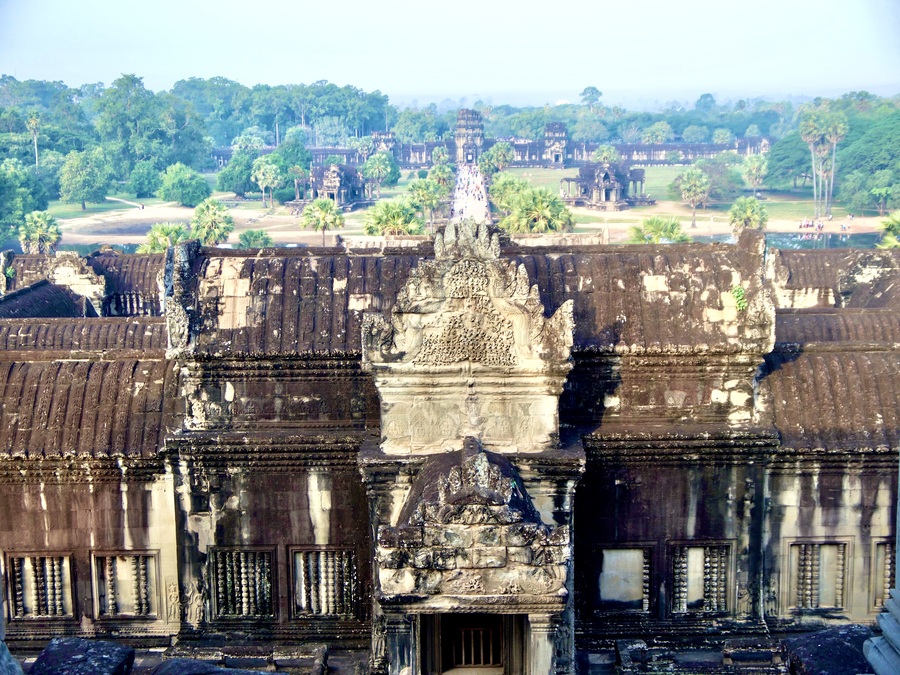
There are two popular loops around the temple complex: the long circuit and the short circuit. During our three days in Siem Reap, we chose to explore both of the loops.
We started with the smaller sites of the big loop and worked our way to the majestic Angkor Wat.
TEMPLES OF ANGKOR: THE GRAND CIRCUIT
The Grand Circuit tour of Angkor encompasses temples that lie on the outskirts of the main complex. Also sometimes referred to as the “Big Circuit,” it includes the temples of Preah Khan, Neak Pean, Ta Som and East Mebon.
Though these temples are some of Angkor’s smaller attractions, they are nonetheless worth visiting.
-
PREAH KHAN TEMPLE
Our first stop was Preah Khan–a temple that consists of a series of unrestored rectangular courtyards.
The temple of Preah Khan is one of the largest complexes at Angkor and a highlight of the Big Circuit. It boasts a maze of vaulted corridors, ornate carvings and lichen-clad stonework.
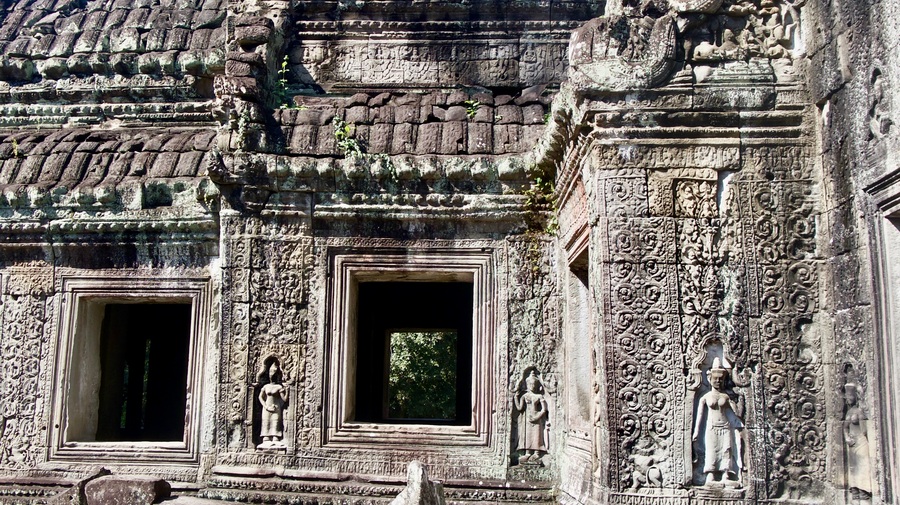
Though Preah Khan’s ornate artisanship is on full display, much of the temple has been consumed by the surrounding jungle.
Since 1991, the World Monuments Fund has maintained Preah Khan and ensured its structural integrity. Recreating the temple’s original engravings would involve too much guesswork, so the WMF has cautiously proceeded with light restoration efforts.
As it stands, the ongoing work at Preah Khan has struck a balance between preserving artisanship and respecting the ruined nature of the temple and its encroaching forest.
-
NEAK PEAN TEMPLE
From Preah Khan, we continued onward, to Neak Pean.
Neak Pean sits on an island, completely surrounded by a reservoir of silvery water. The walk to the temple leads visitors along a wooden footbridge that crosses the water. Skeletal trees emerge from its blue-grey resevior, thrusting their spindly arms skyward.
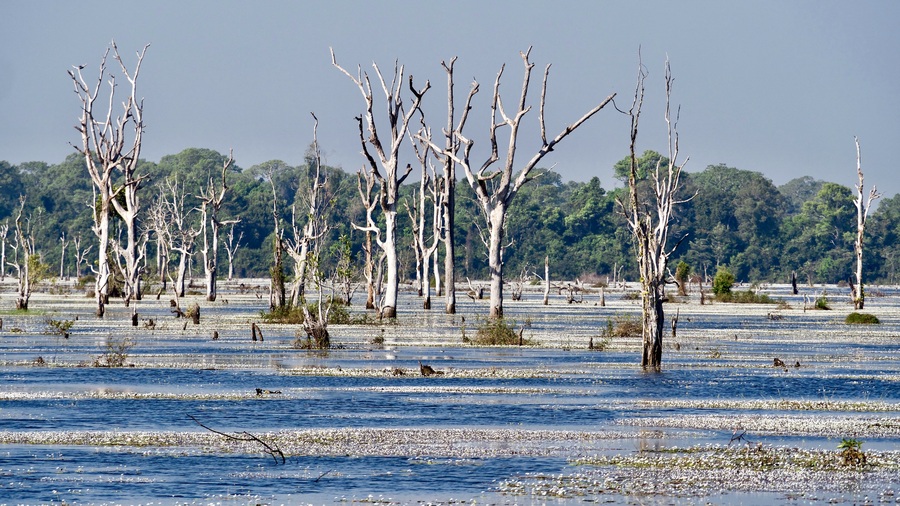
Neak Pean was originally designed for medical purposes. A hospital built by Jayavarman VII, the temple embodies the ancient Hindu belief of balance between the elements. The four connected pools of wate represent the four elements and are entirely symmetrical.
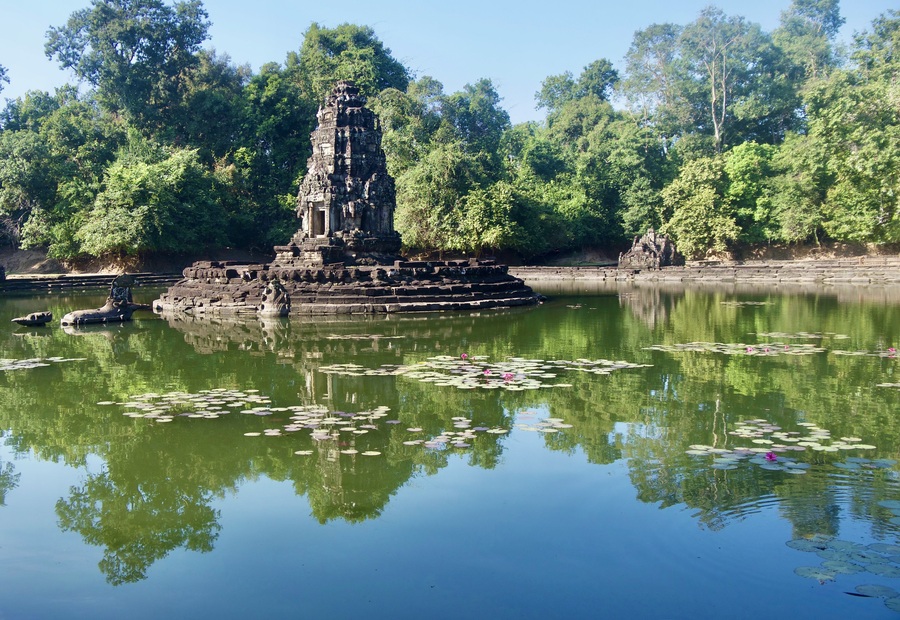
Historically, the devotees of Angkor believed that soaking in the pools of water would balance the elements and, thus, cure disease.
-
TA SOM TEMPLE
The Temple of Ta Som was built at the end of the twelfth century, while King Jayavarman VII ruled the Khmer Empire.
Like its neighboring temples, Ta Som lies in a state of semi-ruin. Trees and other native vegetation burst through crevices in the rock. One of the most prominent features of the site is a huge strangler fig tree that has engulfed the temple’s eastern gate.
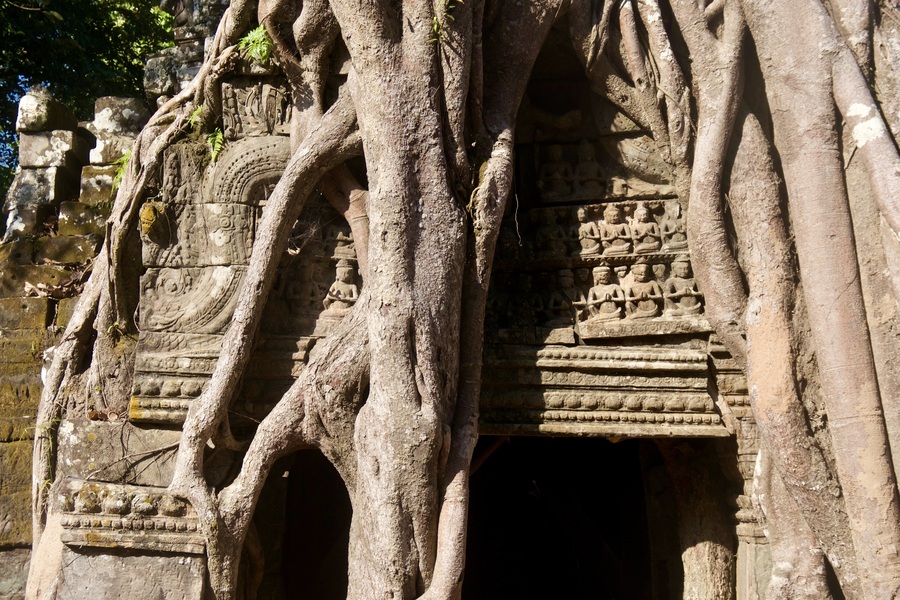
Ta Som is one of the smaller Khmer temples, but it still provides plenty of enticing photo opportunities.
-
PRE RUP TEMPLE
We skipped Pre Rup during our Large Circuit tour, since we had visited the temple for sunset on our first night in Siem Reap. However, Pre Rup is a frequent inclusion in the Big Circuit loop.
Pre Rup is among the top sunset-viewing destinations in Angkor due to its elevated platform that allows you to watch the sun descend below the surrounding jungle. Its extensive brickwork gives the temple a reddish tone tone that is particularly striking during the golden hour.
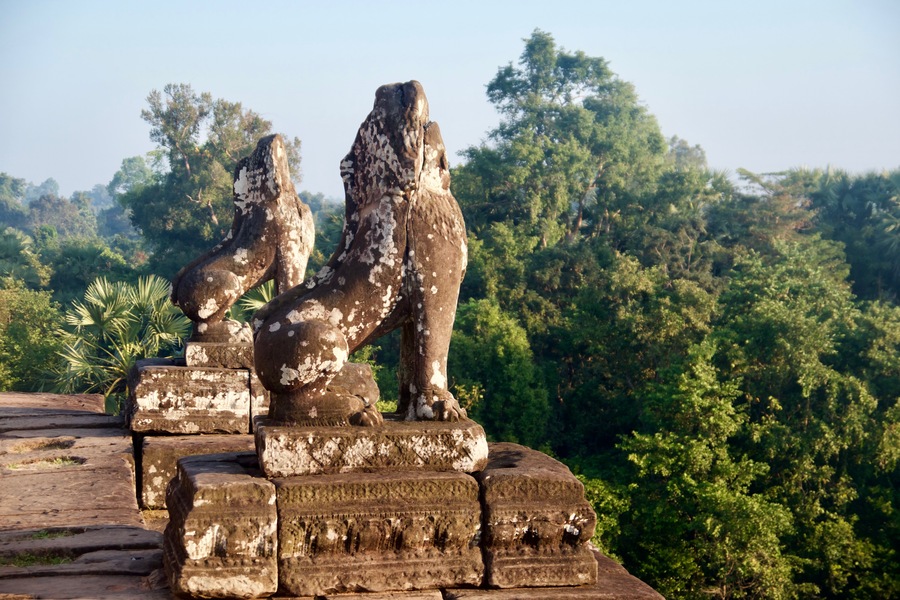
Pre Rup has a square layout. It consists of a multi-tiered pyramid-shaped structure. The temple’s name means ‘turning the body’ and refers to a traditional method of cremation in which the body’s outline is traced with ashes and rotated.
Due in part to its name, some suggest that the temple may have served as an early royal crematorium.
-
EAST MEBON
The East Mebon Temple stands on a small island in the middle of the Eastern Baray—a now-dried historical wetland fed by the Siem Reap River. The temple was once accessible only by boat.
Today the Eastern Baray, once a source of water for irrigation, is an open field.
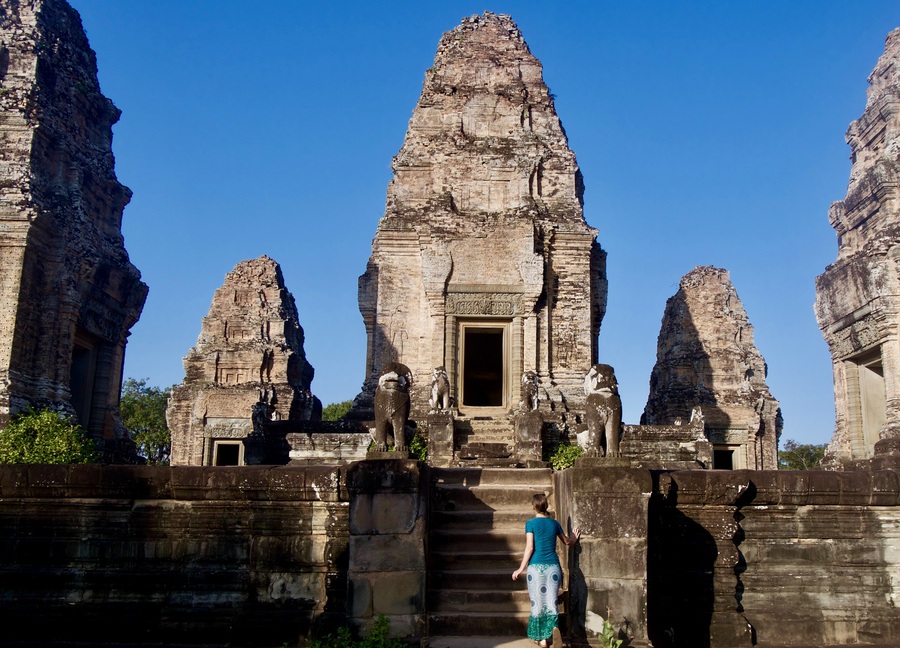
Like Pre Rup, the multi-tiered temple is topped off by a quintet of towers. Its location and design reflects the importance of orientation and cardinal directions in Khmer civilization. The temple was built on a north–south axis with Pre Rup.
-
BANTEAY SREI
Most large loop tours return to Siem Reap after visiting East Mebon, but we decided to add the ornate and delicate rose-colored temple of Banteay Srei to our itinerary.
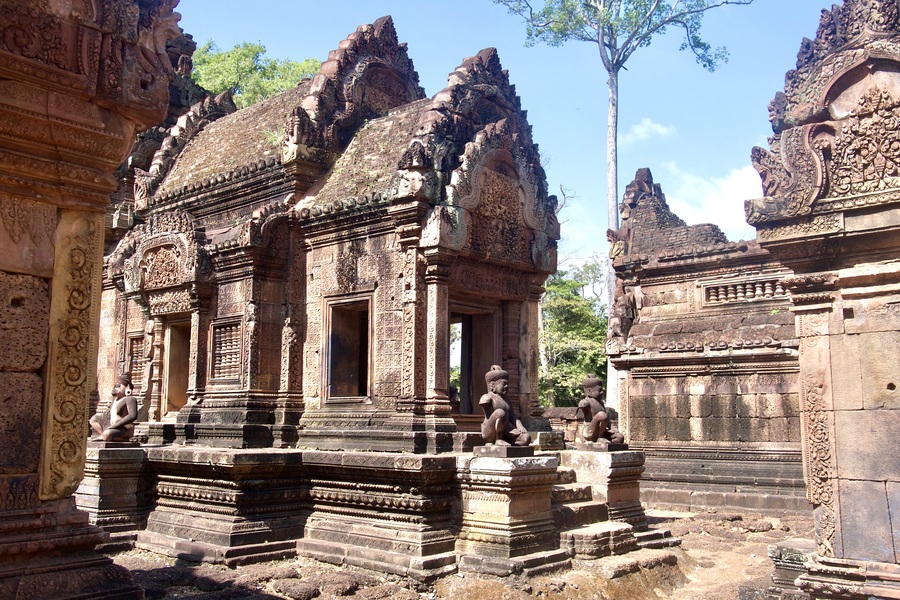
Dedicated to God Shiva, this intricate temple lies four kilometers beyond the Large Circuit. The temple itself is small, but its stonework is unrivaled.
Sometimes deemed the “jewel of Khmer art,” its impeccably-preserved reliefs contain images of goddesses, animals and flowering trees.
THE SMALL CIRCUIT LOOP AT ANGKOR WAT
Even temple aficionados run the risk of being a bit temple’d out after a visit to Angkor. The archeological site’s riches are just so great that, after a while, it is easy to dismiss the beauty of the area’s smaller and less ornate structures. In order to minimize temple burnout and prolong our sense of awe, we saved the the Small Circuit for our second day.
Three of Angkor’s most splendid temples–Angkor Wat, Angkor Thom and Ta Phrom– lie along the park’s Small Circuit.
-
ANGKOR WAT TEMPLE
Our Small Circuit tour began at Angkor Wat—the area’s largest and most well-preserved temple. Though the name ‘Angkor Wat’ is practically synonymous with the entire archeological complex of Angkor, it also refers to the site’s main attraction.
Angkor Wat’s splendor is the love-child of creativity and spiritual devotion. Figuratively, it is heaven on Earth–representing both Mount Meru (the center of the Earth in Hindu cosmolegy) and the dwelling of ancient gods.
Soaring skyward and surrounded by a moat of glassy water, Angkor Wat is incredibly well preserved.
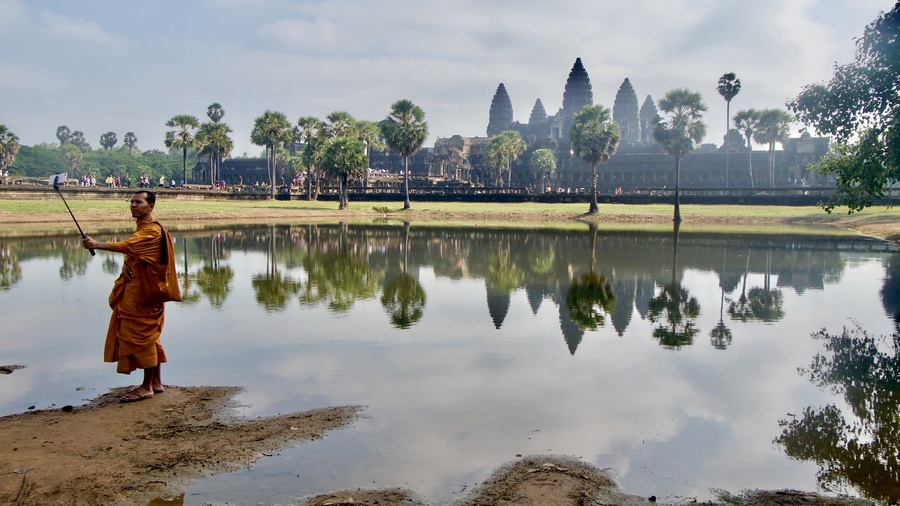
Almost every inch of this immense complex is covered with intricate carvings and motifs. Wrapping around the outside of the central temple, sits an 800 meter long bas relief that depicts historical events and stories from Khmer mythology.
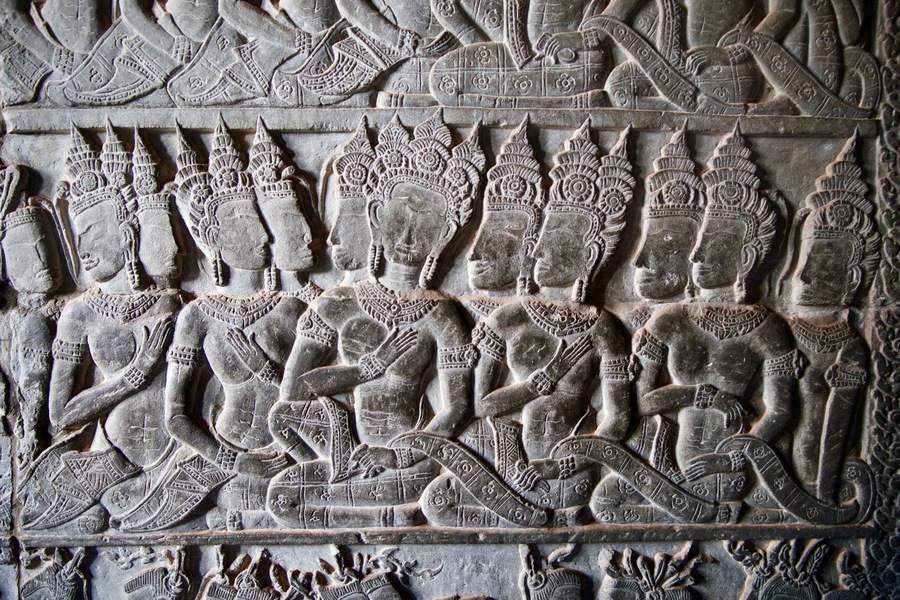
The ultimate statement of Khmer architecture, Angkor Wat is the largest religious building in the world. Aesthetically, it embodies the perfect blend of symbolism and symmetry.
Even if you’re pressed for time and only have one day in Siem Reap, this is where you’ll want to focus your itinerary. In an area overflowing with historical riches, this colossal temple is the undeniable crown jewel.
-
ANGKOR THOM
Near Angkor Wat, the impressive complex of Angkor Thom merits at least an hour of exploration.
Symbolically, Angkor Thom is a microcosm of the universe, divided into four equal parts by its main axes. Its centerpiece, the Temple of Bayon, is situated at the intersection of these axes and stands as the symbolic link between heaven and Earth.
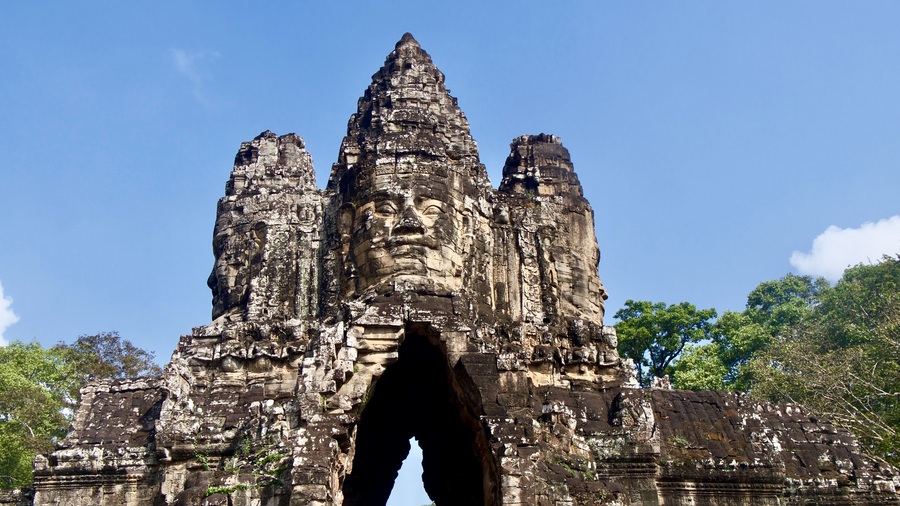
Angkor Thom is a wonder of Khmer artisanship. Its bas reliefs are incredibly intricate and well preserved. More than 200 faces of Bodhisattva Avalokiteshvara adorn the 54 towers in the Angkor Thom Complex—representing an audacious political statement about the change from Hinduism to Mahayana Buddhism.
-
TA PHROM TEMPLE
Last but not least, our guide took us to the atmospheric Ta Phrom temple, made famous in the filming of Tomb Raider.
As with some of the smaller temples we visited during our Large Circuit tour, Ta Phrom appears to have been consumed by the jungle–its crumbling walls locked in the embrace of a sprawling root systems. Trees grow out of the temple’s walls, strangling its intricate structures.
In some places, the temple is remarkably well preserved. In others, tangled roots seem to have swallowed the entire building whole.
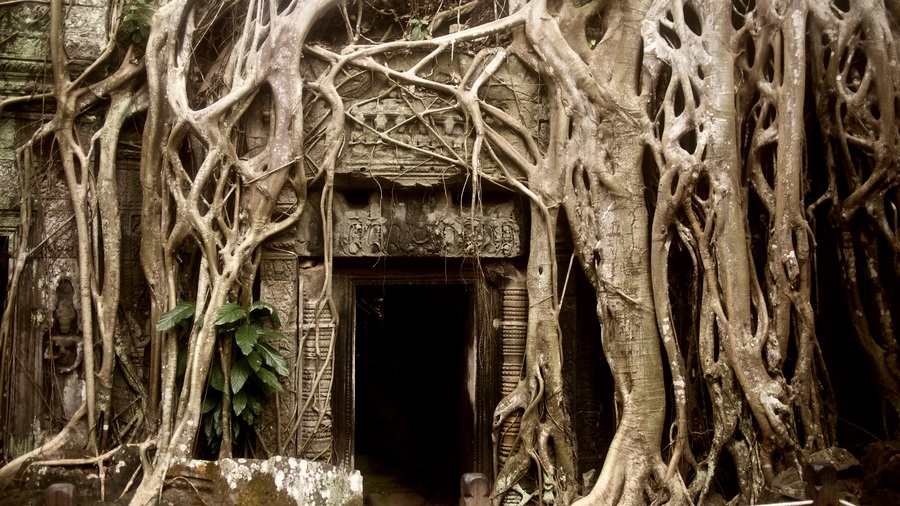
Unlike some of the temples that have been better restored, Ta Phrom looks very much the way Angkor’s monuments must have appeared when European explorers first stumbled upon them: Magical, mysterious and lost in time.
SUNRISE AT ANGKOR WAT
Like Bagan and Borobudur, the temples of Angkor are particularly striking at sunrise and sunset.
We visited the Angkor Wat Temple at sunrise as part of our Small Circuit tour. Alongside throngs of other people waving their selfie sticks in the air, we found a spot to sit near the banks of the lake and we waited amongst a frenzy of camera-toting tourists.
Visiting the Angkor Wat at sunrise is a top bucket list experience. Each morning, throngs of people attempt to capture its lofty spires against the pink and purple sky.
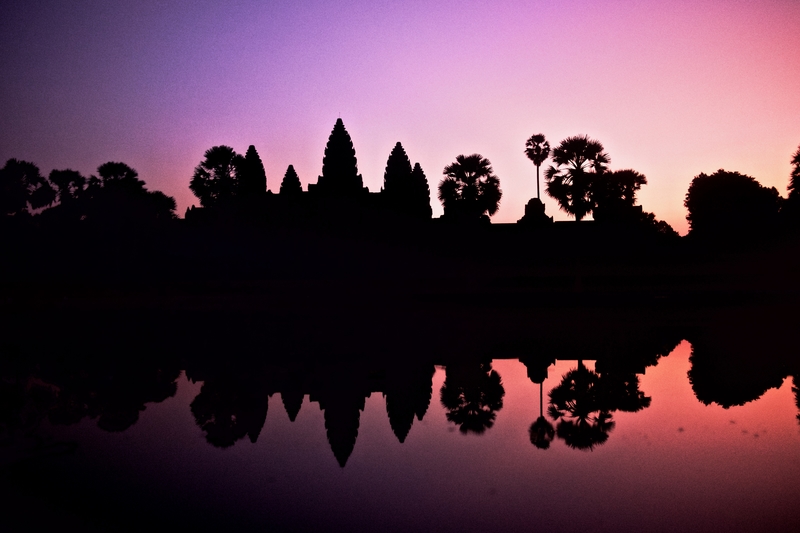
If you plan on visiting Angkor Wat at sunrise, arrive early. By the time we arrived at the temple, at 4:30am, crowds of people had already snagged the best sunrise-viewing spots.
ANGKOR WAT SUNSET
On our first evening in Siem Reap, we hired a tuk tuk driver to take us to the Pre Rup temple for sunset. Pre Rup—alongside Phnom Bakheng and Srah Srang—is among Angkor’s most famous sunset locations.
Truth be told, however, I was surprised by the throngs of people that flocked to Pre Rup at sundown. For, aside from the fact that the temple provides an elevated viewing platform, the sunset view has no defining characteristics or silhouetted shapes in the foreground.
I craned my neck to catch a glimpse of the sinking sun, but quickly decided to seek out a different vantage point, away from the crowds.
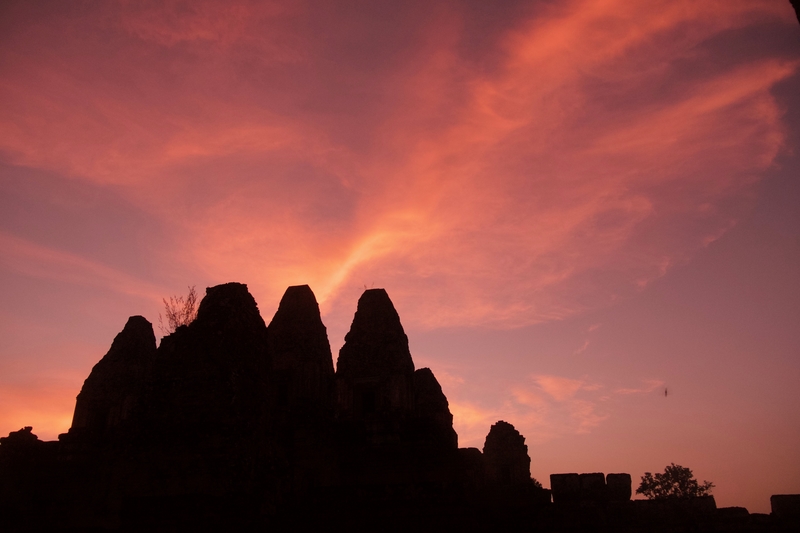
During peak times, the temples of Angkor are crowded. So in order to experience Angkor without the crowds, I scrambled back down the temple stairs, to a quiet corner of the complex.
There, I found myself completely alone. And in silence and solitude, I was able to capture Pre Rup’s spires against the fiery skies.
ANGKOR WAT ENTRANCE FEES
We bought a three day pass to Angkor’s temples ($62) and spent the following two days exploring the archeological site’s main attractions by tuk tuk.
Compared to the rest of Cambodia, visiting the Temples of Angkor is expensive. Yet the costly entrance fee is a small price to pay considering the incredible reward that awaits.
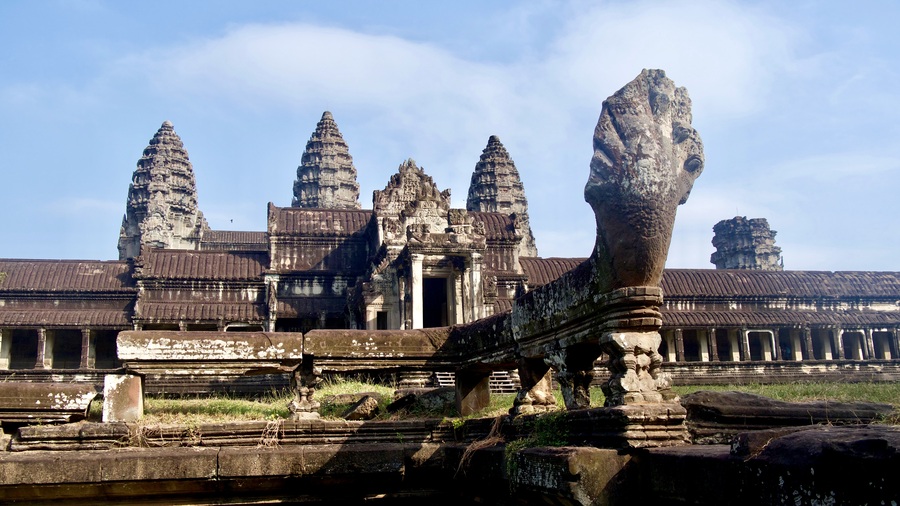
If you’re spending three days or more in Siem Reap, consider buying a multi-day pass for the temples in order to save money and cover more ground. Single day tickets to Angkor Wat cost $37. Three day tickets to Angkor Wat are $62 and week-long tickets cost $72.
GETTING AROUND ANGKOR WAT
Angkor Wat is huge. The archaeological site’s various temples are spread out over 402 sprawling acres of jungle-clad landscape. Traveling the area on foot is both time-consuming and inefficient. Most people (including us) choose to hire a tuk tuk driver when visiting the temple complex. Tuk tuk drivers are everywhere and easy to find. Most hotels in town can help you find a reputable driver.
If you want to explore the ruins independently, another option is to visit Angkor Wat by bicycle. There are inexpensive bike rental options in Siem Reap that will set you back about $10 per day.
Exploring on two wheels gives you the ultimate flexibility to go at your own pace. However, Keep in mind that Cambodia’s hot and sticky climate can make for an uncomfortable ride.
SIEM REAP: GATEWAY TO ANGKOR WAT
Thanks to the temples of Angkor Wat, Cambodia’s tourism industry–long dormant due to political instability in the late 1900s– is booming. And with its rising popularity, the nearby town of Siem Reap has joined Phnom Penh, Koh Rong and Kampot as a permanent fixture on the Cambodia backpacker circuit.
Siem Reap is the gateway to Angkor Wat and the launching pad for tours to the UNESCO-recognized temple complex.
While our Siem Reap itinerary focused on temple-hopping, we enjoyed exploring the town as well. In the evenings, after visiting the temples of Angkor, we spent our time strolling through night market, eating delicious food, and drinking one too many mojitos.
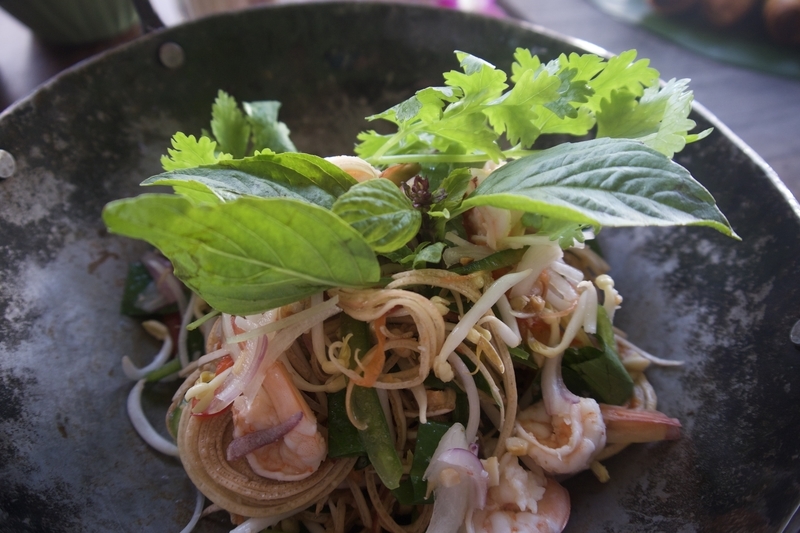
While I only spent three days in Siem Reap, I wish I’d had more time to dedicate to the bustling city. With a few additional days in Siem Reap, I would have included visits to Tonle Sap Lake and the floating village of Kampong Khleang.
WHERE TO STAY IN SIEM REAP
Travel costs in Southeast Asia–and Cambodia in particular–are quite economical as a whole. So even the most luxurious places to stay in Siem Reap are quite affordable by international standards.
At the lower end of the cost spectrum, The Elephant offers high ratings, cheap rooms, a pool, and a spa. It appears to have an exceptional value for the price.
If you’re looking for a midrange option, the Eightfold Urban Resort boasts clean rooms and a lovely shaded garden and pool.
And if cost isn’t an issue, the Treeline Urban Resort offers contemporary rooms in a riverside setting.
****
The archeological complex of Angkor is one of humankind’s most enduring achievements. And simply put, no trip to Southeast Asia would be complete without a few days of exploring its ancient ruins.
During our three days in Siem Reap, I enjoyed temple-going by day and relaxing at night.
It was a perfect few days–combining wild nature, ancient history, sumptuous food and utter relaxation.
_____________
Did You Enjoy This Guide to Angkor Wat and Siem Reap? Pin It!
